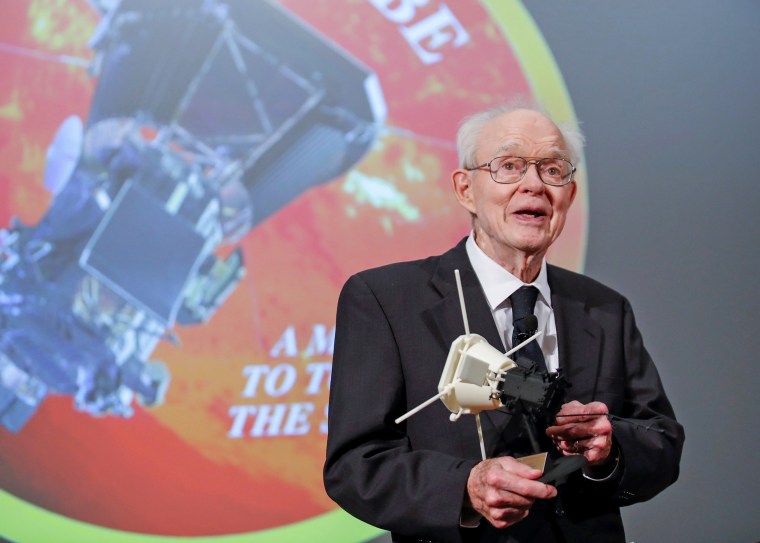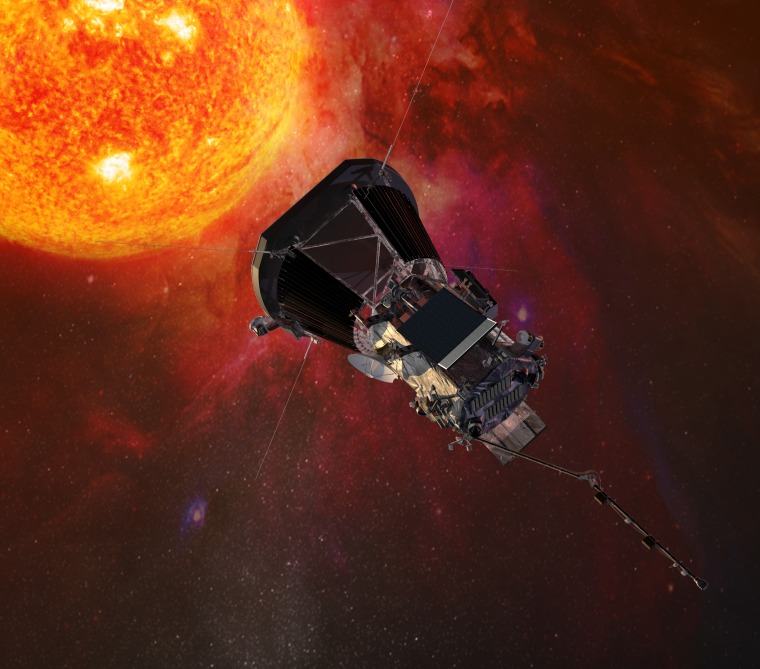In 2018, a NASA spacecraft will launch into the sun’s atmosphere, where it will help scientists predict a solar storm that could wreak havoc on Earth and in interplanetary space.
It’s a mission nearly 60 years in the making, dating back to when astrophysicist Dr. Eugene Parker first predicted the solar wind’s existence in 1958. But only now does NASA have the technology to fly near where that wind originates.
Related: Watch NASA Detail New Solar Probe Plus Mission, First to 'Touch Sun'
The sun’s atmosphere, called the corona, is the only region of the solar system yet to be explored by humanity’s probes — and it’s arguably the most important. The sun is the source of all energy in the solar system. It unleashes torrents of radiation and magnetism that stream toward Earth at supersonic speeds. Once they reach our planet, these clouds of charged plasma can interfere with satellites and ground communications, cause blackouts, and shower airline and spacecraft crews with damaging radiation.
Without advance warning, a huge solar storm could cause up to $2 trillion in damage in the U.S., according to a 2014 report by the National Academy of Sciences. Power lines would be fried by solar particles, plunging the eastern seaboard into a blackout that could take a year to fix. Solar storms can also harm space travelers exploring the moon, Mars, asteroids, or other destinations far from Earth’s protective magnetic field. The trouble is, scientists don’t fully understand why solar storms happen, let alone how to forecast them.
The Parker Solar Probe, renamed in Eugene Parker's honor at a ceremony Wednesday, will try to find those answers by getting uncomfortably close to our star, explained Nicola Fox, project scientist for the spacecraft at the Applied Physics Laboratory of Johns Hopkins University.
“Before now, the materials didn’t exist to allow us to be able to do it,” Fox said during the event at the University of Chicago, where Parker worked until his retirement.

The probe will try to determine why the corona is hotter than the sun's surface — a bizarre fact that seems to defy the laws of nature. If scientists can figure out how the corona is energized, they may be able to predict its violent outbursts, known as coronal mass ejections. Forecasting these plasma storms would give people on Earth a chance to safeguard the power grid, satellites, and communications networks, and give interplanetary explorers time to take cover. Fox said a visit to the sun is the only way to gather the evidence necessary to understand these processes.
“You can learn so much from looking out the window [on Earth]'" she said. "You can see the sun is shining, you can hear the birds are singing. But until you actually go outside, you can’t tell how hot it is, or how windy it is.”
Related: NASA's Mars 2020 Rover Looks Right at Home on the Red Planet
NASA and Johns Hopkins scientists have been building the car-sized probe since 2010. Its heat shield, the toughest ever designed, will safeguard the probe against searing 2,500 F temperatures.
The probe will whip around the sun at 430,000 mph and orbit the sun just 4 million miles from its surface — seven times closer than any spacecraft has ventured. The sun’s disk will appear 23 times larger than it does from Earth, and the light and radiation will be 570 times more intense. The Parker Solar Probe will repeatedly swoop through the outer corona, dipping sensitive science instruments into the raging solar wind.
Along with its instruments, the craft will carry a photo of Parker, a copy of his seminal 1958 solar wind paper, and an inscription of his choosing.
At the ceremony, Parker, one of just 20 men to have a spacecraft named in their honor, said he was ready to find out what the probe would reveal: “It’s ready to do battle with the solar elements as it divulges the secrets of the expanding solar corona.”
